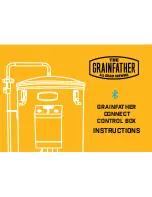
Fig.28-Abb.28
Distanze di sicurezza-Safety distances-Distances de sécurité-Sicherhe-
itsabstände-Distancias de seguridad
CAP.4
INSTALLAZIONE
QUESTE OPERAZIONI SONO DI COMPETENZA
ESCLUSIVA DEI TECNICI SPECIALIZZATI INCARICATI
DAL COSTRUTTORE O DAI RIVENDITORI AUTORIZZATI.
SE EFFETTUATE DA ALTRE PERSONE POSSONO
CREARE SITUAZIONI DI PERICOLO E CAUSARE GRAVI
DANNI ALLE PERSONE E/O AL SOLLEVATORE.
VERIFICA DEI REQUISITI PER L’INSTALLAZIONE
Il sollevatore è costruito per l’impiego in locali chiusi e riparati. Il luogo pre-
scelto non deve essere vicino a lavaggi, a posti di verniciatura, a depositi di
solventi o vernici, a locali con lavorazioni che possono creare atmosfere
esplosive.
VERIFICA DI IDONEITÀ DELLE DIMENSIONI DEL LOCALE E DELLE
DISTANZE DI SICUREZZA.
Il sollevatore deve essere installato rispettando le distanze di sicurezza da
muri,colonne, altre macchine, ecc... come indicate in Figura 28 e secondo le
eventuali prescrizioni della legislazione vigente nel luogo di installazione. Nel
caso di officine con più sollevatori, la loro disposizione dovrà essere definita
e dettagliata in base alle norme di lavoro e di sicurezza.
Verificare in particolare:
·
altezza: minimo 5000 mm; considerare l’altezza dei veicoli da sollevare te-
nendo conto che l’altezza max. dei bracci è di circa 1930 mm e che la
trave superiore é posta all’ altezza di circa 3400 mm.
·
distanza dai muri: minimo 700 mm,
·
spazi per lavorare: minimo 800 mm, oltre le dimensioni del veicolo da sol-
levare.
·
spazi per la POSTAZIONE DI COMANDO,
·
spazi per la manutenzione, per accessi e vie di fuga in caso di emergen-
ze.
·
posizione relativa alle altre macchine,
·
possibilità di realizzare l’allacciamento elettrico.
Nel caso di officine con più sollevatori, la loro disposizione dovrà
essere definita e dettagliata in base alle norme di lavoro e di sicurezza.
Fig.28
Distanze di sicurezza
ILLUMINAZIONE
Tutte le zone della macchina devono essere illuminate in modo uniforme e
sufficiente per garantire le operazioni di regolazione e manutenzione previste
nel manuale, evitando zone d’ombra, riflessi, abbagliamento e affaticamento
della vista.
L’illuminazione deve essere realizzata in accordo con la normativa vigente
nel luogo di installazione (a cura dell’installatore dell’impianto di illuminazio-
ne).
CHAPTER 4
INSTALLATION
THE FOLLOWING OPERATIONS MUST BE
PERFORMED EXCLUSIVELY BY SPECIALISED
TECHNICAL STAFF WITH AUTHORISATION FROM THE
MANUFACTURER OR LICENSED DEALER. IF THESE
OPERATIONS ARE PERFORMED BY OTHER PERSONS ,
SERIOUS PERSONAL INJURY AND/OR IRREPARABLE
DAMAGE TO THE LIFT UNIT MAY RESULT.
INSTALLATION REQUISITE CHECKLIST
The lift is designed for installation in enclosed areas suitably
protected from the weather. The place of installation must be well clear of
areas destined to washing or painting, and away from
solvent or paint storage areas or areas where there is a risk of
potentially explosive atmosphere.
SUITABILITY OF THE DIMENSIONS OF THE PLACE OF
INSTALLATION AND SAFETY CLEARANCES.
The lift must be installed in observance of the clearances between walls, pil-
lars, other machines, etc. indicated in Figure 28 and in compliance with any
legislative requirements in the country of
installation. If in a garage several hoists are installed, their emplacement has
to be carried out according to the relevant labour safety rules.
Check in particular:
·
minimum height: 5000 mm inclusive of height of vehicle, maximum
height of arms, (i.e. 1930 mm.), and upper beam height (i.e.3400mm)
·
minimum distance from walls: 700 mm,
·
minimum working area: 800 mm,
·
area for COMMAND STATION,
·
area for maintenance, access and emergency escape routes.
·
position in relation to other machines,
·
proximity to power supply for trouble-free hook-up.
If in a garage several hoists are installed, their emplacement has to
be carried out according to the relevant labour safety rules.
Fig.28 Safety distances
LIGHTNIG
All parts of the machine must be uniformly lit with sufficient light to assure
that the adjustment and maintenance operations specified in the manual can
be performed, and without areas of shadow, reflected light, glare and avoi-
ding all situations that could give rise to eye fatigue.
The lighting must be installed in accordance with the laws in force in the pla-
ce of installation (responsibility lies with the lighting equipment fitter).
32
Summary of Contents for 210I/42
Page 2: ......
Page 68: ...COLONNE POSTS S ULEN COLONNES COLUMNAS...
Page 69: ...CARRELLI CARRIAGES SCHLITTEN CHARIOTS CARROS...
Page 70: ...BRACCI ARMS ARME BRAS BRAZOS...
















































